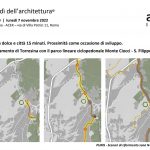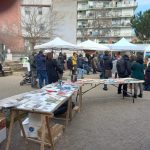FROM THE CHARTER OF PUBLIC SPACE TO HABITAT III: MAPPING OPEN SPACE FROM OUTER SPACE
29 Gennaio 2015
10:30 am – 3 pm
via Ravenna 9b, Roma
A Seminar on the Global Human Settlement Layer and Applications of the European Settlement Map (ESM)
Shortcomings in the supply, quality and distribution of accessible and useable public spaces, particularly in resource-poor and rapidly growing cities, make it imperative to use affordable advanced mapping techniques for city-wide pubic space surveys.
“It is vital to regard urban public spaces as a continuous, articulated and integrated system, to be developed from the scale of neighbourhood relationships to vast environmental spaces […]” (Charter of Public Space) The potential of public space to play its role as a” promoter of equity” can be best fulfilled by correcting imbalances in the supply, quality and distribution of public spaces […] (Draft Global Toolkit on Public Space, UN-Habitat/INU) Recent advances in satellite image technology has made urban analysis possible using maps generated by automatic methods. Despite the enormous computational and statistical challenges which come with bigger and more refined data, human settlement mapping by GHSL technology demonstrates its added value. In Europe, when the GHSL technology is compared with other reference datasets, the resolution improvement is striking. The representation of built, non-built and green areas in European capitals reveals differences in the urban fabric that are being observed by automatic extraction of information for the first time. Furthermore, the European Urban Atlas, the flagship project of the European Union mapping more than 300 urban zones in Europe, can benefit greatly from the refinement of residential areas by building block and different types of urban green integrated by way of the GHSL technology. Information about the location of people becomes more specific when local statistics are used in conjunction with the urban fabric, further enhanced by ancillary information on land use. Finally, the availability of these data in a harmonized and consistent format, in Europe and globally, make it possible to perform regional and global comparisons between human settlements, which in many global contexts was not possible before.The seminar will be followed by a hands-on training session on ESM data recently published on the European Environment Agency data portal, which will feature spatial analysis on an ArcGIS environment.
Presenter: Matina Halkia, Scientific Office, European Commission’s Joint Research Centre (Click here for a short bio)
Moderator: Pietro Garau, International Curator, Biennial of Public Space
Limited seats are available. To reserve your place, please email segreteria@inu.it with your name, institution and contact information.










